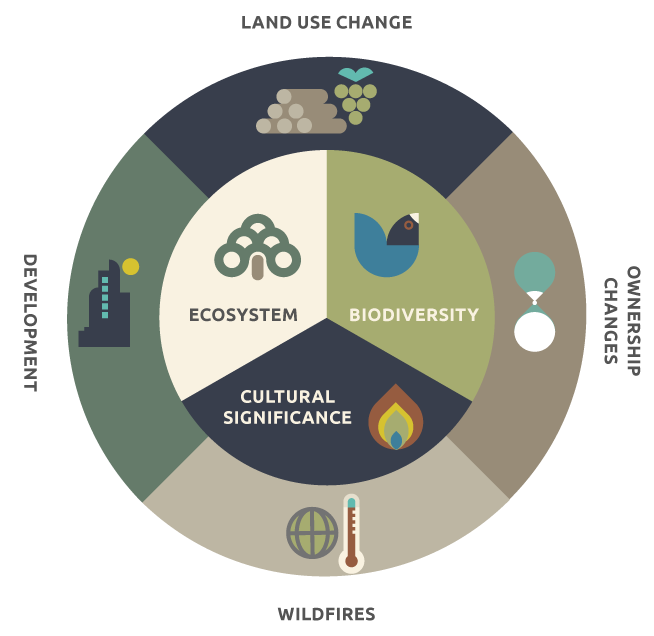Threats & Opportunities
Oak Declines and What We Can Do
Oaks among agricultural fields in Yamhill County, Credit: Ed Alverson
Investing now in oak and prairie systems and species is critical
We believe that fire and drought-tolerant ecosystems are essential to vibrant communities. Oak and prairie systems are icons of the Pacific Northwest landscape and are intrinsic to where and how people live, farm, and recreate. These habitats are rich in biodiversity and are a unique and vital ecosystem, but they are also slow-growing and under threat. Conserving them now is critical.
Threat impact

Conversion and degradation are the two major threats to oak habitat
With significant human population growth forecasted in the coming decades, the remaining habitat is at high risk from rural residential development, the establishment of new vineyards and orchards, conversion to commercial tree farms, and the development of other agricultural systems. Decline of habitat quality, caused by fire exclusion and suppression, conifer encroachment, incompatible livestock grazing, and invasive species also pose threats. Although land use planning laws and local development codes provide some minimal protections, these oak and prairie habitats will continue to decline without intervention and better landowner incentive programs.
Top Conservation Opportunities
How to Take Action:
Land protection
To learn more about land protection options in your region, contact your local land trust in Oregon or Washington.
Restoration in your region
-
Guidance
Contact your local oak and prairie partnership for general guidance
-
What's available
Contact your county Natural Resource Conservation Service office to see what’s available in your county: Oregon NRCS or Washington NRCS
-
Programs
Contact your local conservation district and talk to them directly about how to participate in a variety of programs
Technical assistance
-
For landowners
Oregon State University or Washington State University Extension Offices offer resources, trainings, and technical assistance to landowners.
-
Programs
Contact your local conservation district and talk to them directly about how to participate in a variety of programs
Landowner incentive programs
-
Interactive tool
The Conservation Explorer is an interactive tool that helps sort conservation programs relevant for your land, by county.
-
Sign the Oak Accord
The Oak Accord, a voluntary conservation agreement, was inspired by the vision of local landowners such as Willamette Valley vineyards and forest owners who see the economic and environmental value of native oak habitat and want to play a role in preserving it. In exchange for signing the Oak Accord landowners receive recognition of their conservation commitment, guidance on restoration activities, quantified assessments of the results of their efforts, and marketing tools to help them communicate the conservation work they’re doing to customers, regulators, and colleagues.
Join the Decade of the Oak
-
Participate
Decade of the Oak is an on-the-ground effort to build awareness around the threats that oak and its habitat are facing across the Pacific Northwest. Through local partners, organizations, and communities we’re working to engage with YOU!
